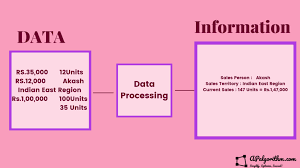Do you ever wonder how data is transformed into a meaningful and useful context?
In this article, we will explore the importance of contextualizing data and the process of converting it.
Discover the tools and techniques used to transform complex data sets, and learn how to extract valuable insights.
By leveraging contextualized data, you can make informed decisions and drive innovation through meaningful data analysis.
The Importance of Contextualizing Data
You should prioritize contextualizing data to ensure its meaningfulness and usefulness.
Contextualizing data involves analyzing and interpreting it within a specific framework or setting. By doing so, you can uncover valuable insights and draw accurate conclusions.
Without proper context, data can be misleading or misinterpreted, leading to flawed decision-making. When you contextualize data, you consider factors such as time, location, demographics, and trends.
For example, if you’re analyzing sales data, you need to understand the market conditions, customer behavior, and competitive landscape to make informed decisions.
Contextualizing data also helps you identify patterns and trends, enabling you to predict future outcomes and make proactive decisions.
Ultimately, by prioritizing the contextualization of data, you can harness its full potential and derive actionable insights for your business or organization.
Understanding the Data Conversion Process
To understand the data conversion process, it’s crucial to comprehend the intricacies involved in transforming raw data into a usable format. When you convert data, you’re essentially taking information in one form and converting it into another form that’s more suitable for analysis or processing.
This process involves several steps, such as data extraction, data cleaning, and data transformation. First, you need to extract the relevant data from various sources, such as databases or spreadsheets. Then, you have to clean the data by removing any inconsistencies or errors.
Tools and Techniques for Data Transformation
There are various tools and techniques available to help with data transformation, allowing you to efficiently convert raw data into a more meaningful and usable format.
One popular tool is ETL (Extract, Transform, Load) software, which enables you to extract data from different sources, transform it according to specific rules or requirements, and load it into a new system or database. This process ensures that the data is organized, cleansed, and standardized, making it easier to analyze and derive insights.
Another technique is data mapping, where you create a mapping between the source and target data elements, defining how the data should be transformed and mapped from one format to another.
Additionally, data integration tools can be used to consolidate and combine data from various sources, providing a unified view that simplifies analysis and decision-making.
Overall, these tools and techniques play a crucial role in transforming raw data into a more meaningful and useful context.
Extracting Insights From Complex Data Sets
When dealing with complex data sets, you need to focus on extracting insights that are actionable and meaningful.
By analyzing the data using various tools and techniques, you can uncover valuable patterns, trends, and relationships.
Visualizing the data in a clear and concise manner can also help in understanding and communicating the insights effectively.
Complex Data Interpretation
You can extract valuable insights from complex data sets using advanced data interpretation techniques. By employing these techniques, you can uncover patterns, trends, and relationships within the data that may not be immediately apparent.
These insights can provide a deeper understanding of the underlying factors driving certain outcomes or behaviors. With complex data interpretation, you can make informed decisions, identify potential risks or opportunities, and optimize various processes or strategies.
The key lies in employing advanced statistical methods, machine learning algorithms, and visualization tools to analyze the data in a meaningful and useful context. This enables you to gain a competitive advantage, improve decision-making, and enhance overall business performance.
Extracting Actionable Insights
If you consistently employ advanced data analysis techniques, you can extract actionable insights from complex data sets. By utilizing these techniques, you gain the ability to uncover valuable information that can be used to make informed decisions and drive meaningful outcomes.
With the vast amount of data available today, it’s crucial to have the skills and tools necessary to effectively analyze and interpret it. By applying advanced statistical models and algorithms, you can identify patterns, trends, and correlations within the data that may not be immediately apparent.
These insights can then be used to optimize business processes, improve customer experiences, and drive innovation. The key is to approach data analysis with a curious and open mind, always seeking to uncover the hidden gems that lie within the complexity of the data.
Meaningful Data Visualization
To truly understand the insights hidden within complex data sets, it’s essential for you to visualize the data meaningfully and effectively.
By transforming raw data into visual representations, you can gain a deeper understanding of patterns, trends, and relationships that might otherwise go unnoticed.
Through meaningful data visualization, you can communicate complex information in a clear and concise manner. Visuals such as graphs, charts, and maps allow you to quickly identify patterns, outliers, and correlations.
This enables you to make informed decisions and take appropriate actions based on the insights you derive from the data.
Effective data visualization helps you comprehend and communicate the story that the data is telling, empowering you to leverage its potential for problem-solving, innovation, and strategic decision-making.
Leveraging Contextualized Data for Decision-Making
When it comes to making decisions, leveraging contextualized data can greatly improve your chances of success.
By understanding the specific context in which the data was collected, you can extract valuable insights and make more informed choices.
This allows you to not only extract value from the data but also improve your decision-making process overall.
Improving Decision-Making Through Context
You can enhance your decision-making by leveraging contextualized data.
Contextualized data provides you with a deeper understanding of the situation at hand, allowing you to make more informed choices.
By considering the specific circumstances, relationships, and patterns surrounding your decision, you can gain valuable insights that would otherwise be missed.
Contextualized data adds meaning and relevance to raw information, giving you a clearer picture of the potential outcomes and risks involved.
It helps you identify trends and anticipate future scenarios, enabling you to make proactive decisions rather than reactive ones.
With contextualized data, you’re able to consider multiple perspectives and factors, resulting in more effective and successful decision-making.
Extracting Value From Data
By extracting value from data and leveraging contextualized information, you can make more informed decisions. Data is abundant, but it’s the ability to derive meaning and usefulness from it that truly matters.
Extracting value from data involves analyzing, organizing, and interpreting it to uncover insights and trends. This process allows you to understand the underlying patterns and relationships within the data, enabling you to make more informed decisions.
By leveraging contextualized information, you can further enhance your decision-making abilities. Context provides a deeper understanding of the data by considering the specific circumstances, environment, and relevant factors surrounding it. This helps you make decisions that aren’t only based on data but also take into account the real-world context in which they’ll be applied.
Ultimately, extracting value from data and leveraging contextualized information empowers you to make better decisions that drive success and growth.
Driving Innovation Through Meaningful Data Analysis
Get ready to transform your business through the power of meaningful data analysis, driving innovation like never before.
By harnessing the potential of data, you can gain valuable insights that will revolutionize your operations. With the right tools and techniques, you can uncover patterns, trends, and correlations that were previously hidden.
This newfound knowledge can fuel your decision-making process and guide you towards more effective strategies. Imagine the possibilities of using data to optimize your supply chain, enhance customer experiences, and identify new market opportunities.
By leveraging data analysis, you can stay ahead of the competition and make data-driven decisions that propel your business forward. Embrace the power of data analysis and unlock the potential for innovation in your organization.
The future is waiting, and it’s time to seize it.
Conclusion
In conclusion, by converting data into a meaningful and useful context, you gain valuable insights and make informed decisions.
Through the process of data transformation and leveraging tools and techniques, you can extract insights from complex data sets.
This contextualized data is crucial for driving innovation and facilitating effective decision-making.
By understanding the importance of contextualizing data, you can unlock its full potential and maximize its impact on your organization.


